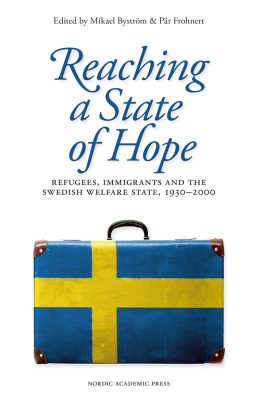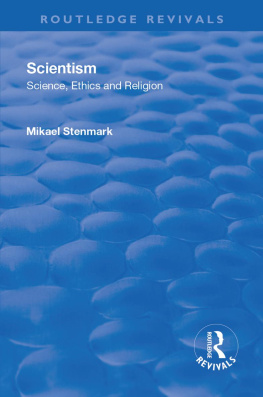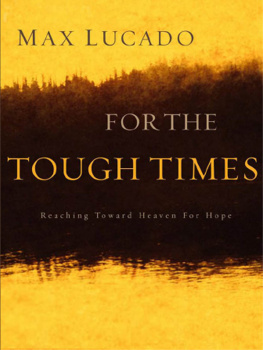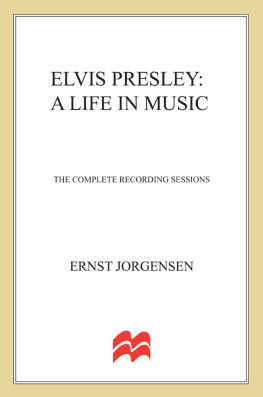Mikael Byström - Reaching a State of Hope
Here you can read online Mikael Byström - Reaching a State of Hope full text of the book (entire story) in english for free. Download pdf and epub, get meaning, cover and reviews about this ebook. year: 2014, publisher: NORDIC ACADEMIC PRESS, genre: Politics. Description of the work, (preface) as well as reviews are available. Best literature library LitArk.com created for fans of good reading and offers a wide selection of genres:
Romance novel
Science fiction
Adventure
Detective
Science
History
Home and family
Prose
Art
Politics
Computer
Non-fiction
Religion
Business
Children
Humor
Choose a favorite category and find really read worthwhile books. Enjoy immersion in the world of imagination, feel the emotions of the characters or learn something new for yourself, make an fascinating discovery.
- Book:Reaching a State of Hope
- Author:
- Publisher:NORDIC ACADEMIC PRESS
- Genre:
- Year:2014
- Rating:3 / 5
- Favourites:Add to favourites
- Your mark:
- 60
- 1
- 2
- 3
- 4
- 5
Reaching a State of Hope: summary, description and annotation
We offer to read an annotation, description, summary or preface (depends on what the author of the book "Reaching a State of Hope" wrote himself). If you haven't found the necessary information about the book — write in the comments, we will try to find it.
Reaching a State of Hope — read online for free the complete book (whole text) full work
Below is the text of the book, divided by pages. System saving the place of the last page read, allows you to conveniently read the book "Reaching a State of Hope" online for free, without having to search again every time where you left off. Put a bookmark, and you can go to the page where you finished reading at any time.
Font size:
Interval:
Bookmark:
Reaching a State
of Hope
Refugees, Immigrants and
the Swedish Welfare State, 19302000
Edited by
Mikael Bystrm & Pr Frohnert

NORDIC ACADEMIC PRESS
Nordic Academic Press
P.O. Box 1206
SE-221 05 Lund, Sweden
info@nordicacademicpress.com
www.nordicacademicpress.com
Nordic Academic Press, Mikael Bystrm and Pr Frohnert 2013
Cover design: Jacob Wiberg
Tryckt utgva ISBN 978-91-87351-23-5
E-bok ISBN 978-91-87351-58-7
Acknowledgements and general background
Mikael Bystrm & Pr Frohnert
Acknowledgements
With great pleasure we approach the end of a long journey of writing and editing this anthology. We wish to thank all the contributors and, especially our international colleagues, for all their efforts, and their patience with us editors. This volume falls within the project The refugees and the Peoples home , financed by the Swedish Research Council. We also want to express our gratitude to Dr Charlotte Merton who corrected our handling of the English language, and Annika Olsson, publishing manager at Nordic Academic Press, for an excellent collaboration and for pushing us forwards. We gratefully acknowledge that the costs for the publishing and the language proofreading have generously been covered by subsidies for internationalization from the former vice-chancellor of Stockholm University, as well as from the Department of History at the same university.
Sweden as a country of immigration
In 1930, Sweden was a small nation that had recently but successfully entered the industrial age. The trials of the Great Depression led to a political compromise in 1932 between the Social Democratic Party and the Farmers League that laid the ground for over forty years of social-democratic political hegemony. During the 1930s, the Social Democrats started the construction of the Peoples home, a Swedish version of a welfare state intended to abolish all social and economic barriers, as was said in Parliament in 1928, and with extensive social security reforms; a model that bore great similarities to the Norwegian and Danish welfare states. The concept was successful, and soon achieved international fame thanks to publications such as Marquis Childss Sweden: The Middle Way of 1936. Through an adaptable policy of neutrality, Sweden then succeeded in staying outside the Second World War. When peace arrived, the country had a huge economic advantage in the immediate post-war period, in contrast to the war-torn countries of the Continent. The whole period up to the mid-1970s was characterized by a strong economic growth, and particularly from the 1950s a rapid expansion of the countrys welfare systems. The standard of living in Sweden was to be among the highest in the world.
Less well known from an international perspective is that Sweden after 1945 has been a country of immigration. Before 19456 there was exclusively refugee immigration; thereafter, and especially from the early 1950s to the mid-1970s, there was extensive labour immigration, mostly from the Nordic countries, but also from Southern Europe, Yugoslavia, and Turkey. After the economic recession in the 1970s, labour immigration was replaced by refugee and family reunification immigration, which has predominated from then on, remaining substantial despite increasing restrictions. The early 1990s in particular saw large groups of refugees arrive in Sweden, to a growing extent from non-European countries. In 1930, the foreign-born population of Sweden was very small; by end of the war it had grown due to political and war refugees; at the beginning of the 1970s, as labour immigration culminated, the proportion was substantial, since when it has continued to grow: in 2000 the proportion of the Swedish population that was foreign-born was 11.3 per cent.
Objectives
The main purpose of this anthology is to elucidate for an international audience the central aspects of Swedish immigration and immigrant history, both refugee and labour immigration, during the period 1930 to 2000. To our knowledge this has not been attempted before on this scale, and certainly not in this form. There is a wide-ranging article on Swedish immigration and immigration policy by the Swedish political scientist Tomas Hammar published in 1985 in his anthology European Immigration Policy, but the focus was on contemporary issues, albeit he gives a historical overview of developments in Sweden in the twentieth century.
All bar four of the sixteen essays in the present anthology were written in connection with a conference in Stockholm in May 2010. The principal commentator at the conference, Dr Mario Knig, made a heroic contribution by critiquing all the papers presented on that occasion. Knig had been one of the historical research assistants and in 2001 the chief editor of the final report for the Bergier Commission (the Independent Commission of Experts SwitzerlandSecond World War (ICE)) on Switzerlands actions during the Second World War in relation to Nazi Germany. Five of the contributions to the present anthology were also commented on after the conference by Louise London, author of the book Whitehall and the Jews 19331948, which has attracted much attention, and a contributor here of one of the two essays that treats other countries than Sweden in order to bring out the Swedish example in relief against the larger European picture; she treats the British policy towards the Jewish refugees in 19331948, while Georg Kreis discusses the link between the Swiss refugee policy after 1945 with that pursued in 193345. Kreis, a member of the Bergier Commission, has published extensively on Swiss immigration policy, and was a keynote speaker at the Stockholm conference.
The concluding essay by Frank Caestecker brings out the characteristics of Swedish immigration and immigrant policies in relation to European developments at large. Caestecker is particularly suited for the task as in 2010 he was co-author and co-editor with Bob Moore of Refugees from Nazi Germany and the Liberal European States, a book that deals with the international refugee regime and includes non-European surveys in addition to the refugee policies and reception in Germanys liberal neighbour states: Belgium, Denmark, France, Luxemburg, the Netherlands, Switzerland, and the United Kingdom.
Demographic development
In 1930 Sweden had a population of slightly over 6 million. The majority were Lutheran by dint of their membership of the Established Church, and demonstrated a high degree of homogeneity, while such minorities as existed were few and small, the largest group being the Sami, the Finnish-speakers in the northernmost part of Sweden (neither group numbering more than 25,000), the Jews (some few thousands), and a small group of Roma. Until around 1910, Swedish emigration had been very large, mainly to the US, while in the period 18211930 1.2 million Swedes left the country, the equivalent of 20 per cent of the countrys population in 1900. Thus, fresh in their memories was a national self-image of a country that was losing young people who chose to leave home for a better life overseas.
In 1930, only 1 per cent of the population was foreign-born (a figure that also included re-immigrating Swedes), which it must be said was a very low figure in a European perspective. Half of them came from the neighbouring countries of Finland, Norway, and Denmark, the rest mainly from Germany, Russia, Poland, and the three small Baltic states. From the East European countries, Jews constituted an important element. To a small extent, Sweden had received refugees from the Russian Revolution and the Finnish Civil War in 1918, but before 1930 Swedish experience of refugee immigration was very limited.
Next pageFont size:
Interval:
Bookmark:
Similar books «Reaching a State of Hope»
Look at similar books to Reaching a State of Hope. We have selected literature similar in name and meaning in the hope of providing readers with more options to find new, interesting, not yet read works.
Discussion, reviews of the book Reaching a State of Hope and just readers' own opinions. Leave your comments, write what you think about the work, its meaning or the main characters. Specify what exactly you liked and what you didn't like, and why you think so.













